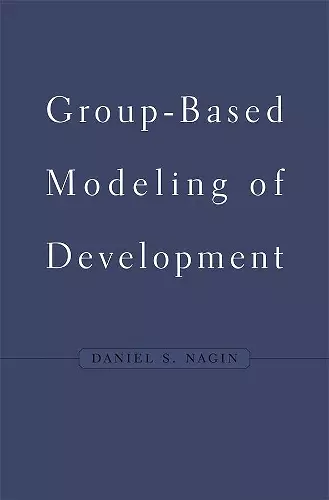Group-Based Modeling of Development
Format:Hardback
Publisher:Harvard University Press
Published:25th May '05
Currently unavailable, our supplier has not provided us a restock date

Nagin's book provides a thorough and accessible treatment of the statistical method for analyzing longitudinal data to which he has contributed so much in the last decade. The hallmark of this method is its identification of a set of distinct trajectories of change over time in order to capture a sample's diversity in patterns of development. Nagin and his colleagues have applied, refined, and extended this approach over the past decade and this book is the culmination that brings it all together. -- D. Wayne Osgood, The Pennsylvania State University Daniel Nagin's work on developmental trajectories represents a fundamental component of modern thinking about delinquency. Further, as a paradigm for behavior modeling, his approach has great potential throughout the social sciences. This is an important book. -- Steven Durlauf, University of Wisconsin-Madison
This book provides a systematic exposition of a group-based statistical method for analyzing longitudinal data in the social and behavioral sciences and in medicine. The methods can be applied to a wide range of data, such as that describing the progression of delinquency and criminality over the life course, or changes in income over time.
This book provides a systematic exposition of a group-based statistical method for analyzing longitudinal data in the social and behavioral sciences and in medicine. The methods can be applied to a wide range of data, such as that describing the progression of delinquency and criminality over the life course, changes in income over time, the course of a disease or physiological condition, or the evolution of the socioeconomic status of communities. Using real-world research data from longitudinal studies, the book explains and applies this method for identifying distinctive time-based progressions called developmental trajectories. Rather than assuming the existence of developmental trajectories of a specific form before statistical data analysis begins, the method allows the trajectories to emerge from the data itself. Thus, in an analysis of data on Montreal school children, it teases apart four distinct trajectories of physical aggression over the ages 6 to 15, examines predictors of these trajectories, and identifies events that may alter the trajectories.
Aimed at consumers of statistical methodology, including social scientists, criminologists, psychologists, and medical researchers, the book presents the statistical theory underlying the method with a mixture of intuition and technical development.
Nagin's book provides a thorough and accessible treatment of the statistical method for analyzing longitudinal data to which he has contributed so much in the last decade. The hallmark of this method is its identification of a set of distinct trajectories of change over time in order to capture a sample's diversity in patterns of development. Nagin and his colleagues have applied, refined, and extended this approach over the past decade and this book is the culmination that brings it all together. -- D. Wayne Osgood, The Pennsylvania State University
Daniel Nagin's work on developmental trajectories represents a fundamental component of modern thinking about delinquency. Further, as a paradigm for behavior modeling, his approach has great potential throughout the social sciences. This is an important book. -- Steven Durlauf, University of Wisconsin-Madison
ISBN: 9780674016866
Dimensions: unknown
Weight: unknown
214 pages